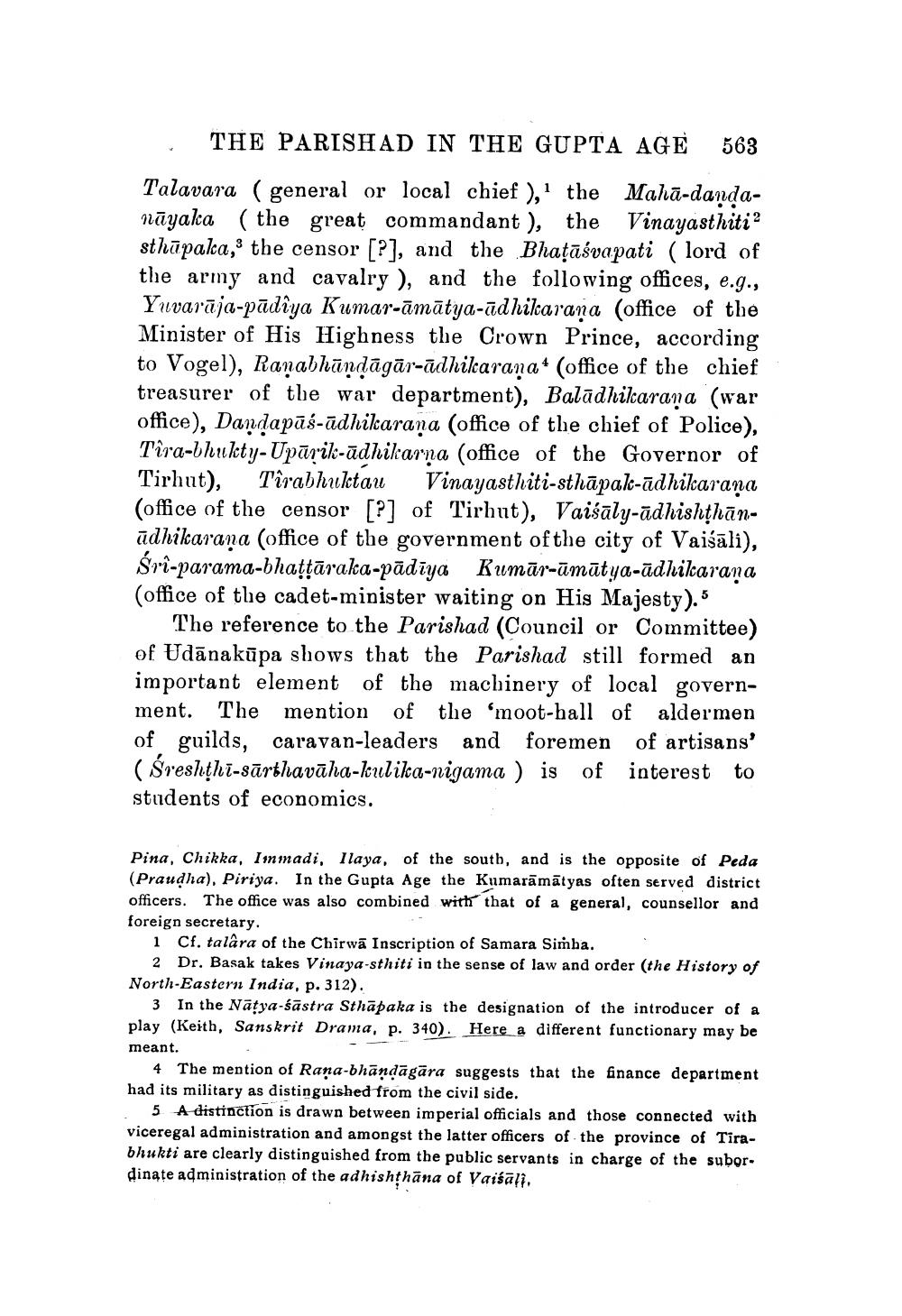________________
THE PARISHAD IN THE GUPTA AGE 563
Talavara (general or local chief ), the Mahā-dandanāyaka ( the great commandant ), the Vinayasthiti? sthāpaka, the censor [?], and the Bhatāśvapati ( lord of the army and cavalry ), and the following offices, e.g., Yuvarāja-pādiya Kumar-āmātya-ūdhikarana (office of the Minister of His Highness the Crown Prince, according to Vogel), Ranabhāndāgār-ūdhikaraṇa+ (office of the chief treasurer of the war department), Balādhikaraṇa (war office), Dandapās-adhikarana (office of the chief of Police), Tira-bhukty-Upārik-ūdhikarna (office of the Governor of Tirhut), Tîrabhuktau Vinayasthiti-sthāpak-adhikaraña (office of the censor [?] of Tirhut), Vaiśāly-ādhishthānūdhikarana (office of the government of the city of Vaišāli), Śri-parama-bhattāraka-pādīya Kumārcūmūtya-ādhilarana (office of the cadet-minister waiting on His Majesty).5
The reference to the Parishad (Council or Committee) of Udānakūpa shows that the Parishad still formed an important element of the machinery of local government. The mention of the 'moot-hall of aldermen of guilds, caravan-leaders and foremen of artisans' (Śreshthi-sārthavāha-kulika-nigama ) is of interest to students of economics.
Pina, Chikka, Immadi, Ilaya, of the south, and is the opposite of Peda (Praudha), Piriya. In the Gupta Age the Kumarāmātyas often served district officers. The office was also combined with that of a general, counsellor and foreign secretary.
1 Cf, talâra of the Chirwa Inscription of Samara Simba.
2 Dr. Basak takes Vinaya-sthiti in the sense of law and order (the History of North-Eastern India, p. 312).
3 In the Natya-śāstra Sthāpaka is the designation of the introducer of a play (Keith, Sanskrit Drama, p. 340). Here a different functionary may be meant.
4 The mention of Rana-bhāndāgāra suggests that the finance department had its military as distinguished from the civil side.
5 A distinction is drawn between imperial officials and those connected with viceregal administration and amongst the latter officers of the province of Tirabhukti are clearly distinguished from the public servants in charge of the subordinate administration of the adhishthāna of Vaiśāli.




